Artist Interviews 2022
Nathalie Minerva 
By Laura Siebold
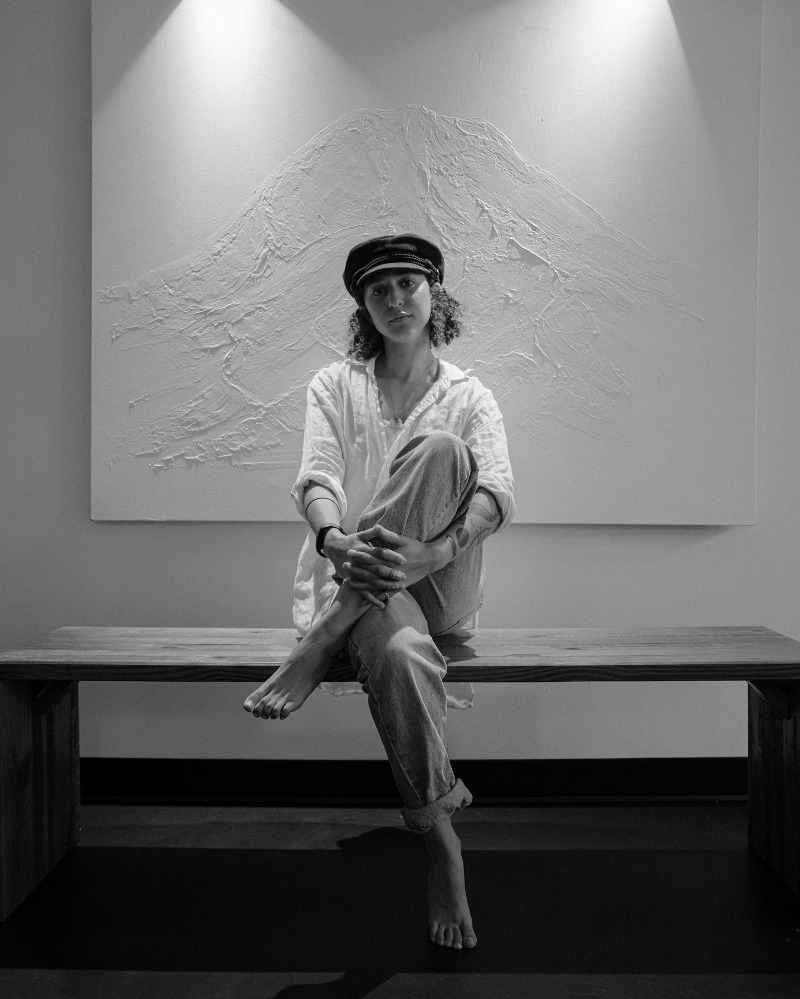
Nathalie Minerva creates purely white artworks, shaping ocean waves, and mountain ranges with acrylic paint, polymer, and modeling paste. In her interview, we asked the artist to describe her art in three words. Nathalie tells us about her identity as an artist, and about nature and figurative work as the center of her art. In her paintings, Nathalie combines “an image and a message through texture and light”. Read on to discover more about this wonderful artist and the different layers inherent in her work, forging understanding for social and environmental issues she raises with her work.
Nathalie Minerva is based in Seattle, Washington.
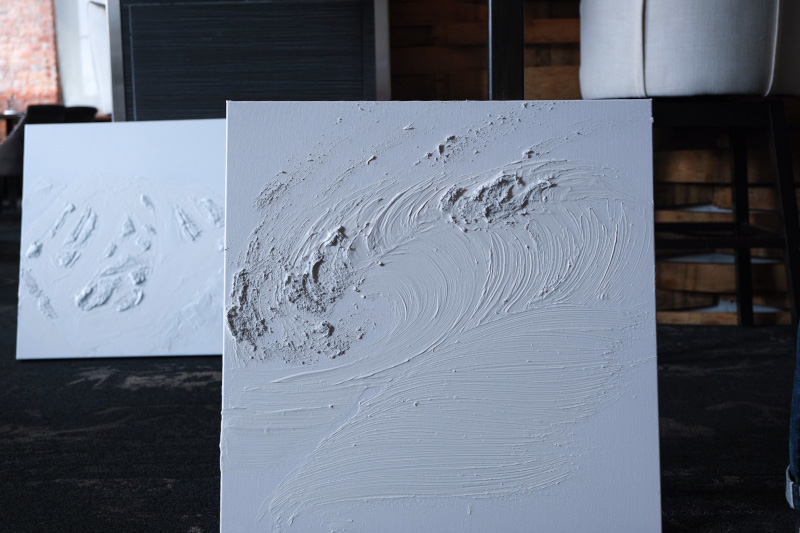
Nathalie, I absolutely love your artwork, and am so glad to interview you for this issue.
Can you please start by describing your art in three words? Please go into detail about
why you chose those three words.
Sober, interactive, and adaptable. Sober is an expression we use in French to describe something that is soothing, clean, simple, and pure. It’s typically used to describe a room, an environment or even an energy. Interactive because of the multidimensional nature of every painting. Each one lives with the seasons, time of day, lighting and even the angle at which you chose to appreciate it. And lastly, adaptable, because I’ve had the pleasure of seeing my work in settings that wouldn’t particularly speak to each other. I feel I was able to create something that could quite literally fit anywhere.
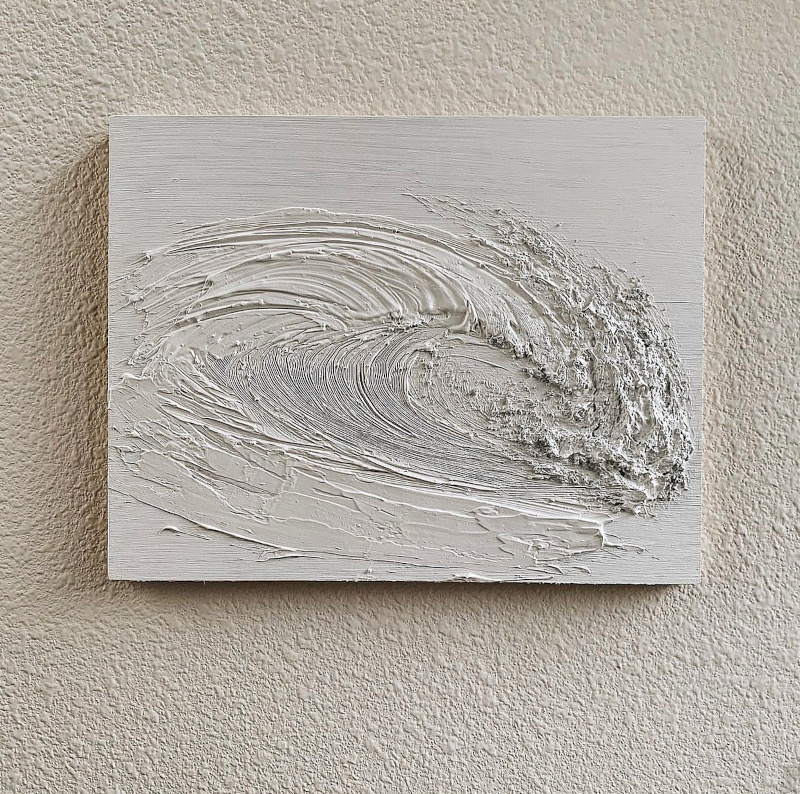
You are originally from Montreal, but are currently based in Seattle, Washington. Do you
exhibit your art in a specific gallery in Seattle? If yes, since when have you been
exhibiting your art, and what have you learned from interactions with viewers?
I’m not currently exhibiting in a gallery, my work is mostly exposed online, or in commercial and residential spaces. Most recently, I started working with Sarah at Seattle Art Source, who showcases my work in her showroom in Georgetown. I also just acquired a new studio space that is part workspace, part exhibition/show room for people who would want to experience my work in person. I’d love to exhibit my work in a gallery in the future when the time is right. For the time being, my cup is filled by the humbling reactions I get from children and adults alike to my paintings – they are as absorbed by the shadows, the textures and movement as I am, and that is the most validating and beautiful compliment.
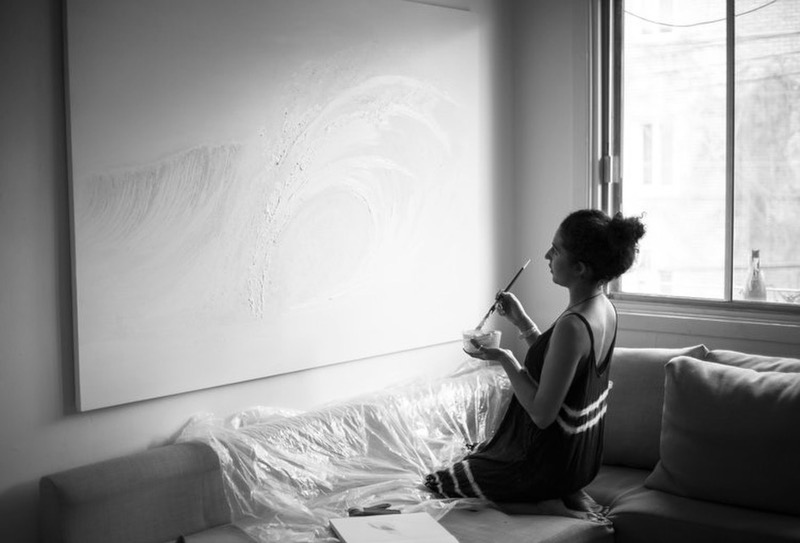
Can you tell us about your early beginnings in the art world? Was there a specific
moment in your life when you identified yourself as an artist?
I think I have always been an artist, since I was very little. However, things first started to become real while attending a college Fine Arts program in Montreal. I think that’s where being an artist became part of my identity, but my sense of self as an artist has developed and changed over time and through the experiences of the many places I’ve lived [in]. I do feel though, that a real defining moment was in 2015, when I started painting waves over my couch in my small apartment on the Plateau Mont-Royal. That’s when I knew I wanted to do what I was doing.
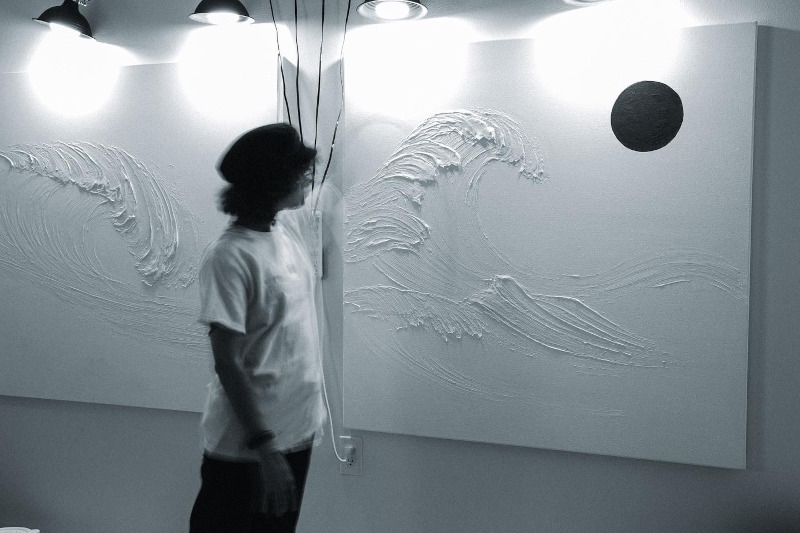
Your art focuses on nature – the ocean and the mountains. What fascinates you about
nature and what can we learn from it?
My art focuses on nature because it is constantly moving, changing, evolving, adapting, forgiving… and that’s what I think we must learn from it: Regardless of whatever the world throws at us, we must keep moving, changing, evolving, adapting, and forgiving…
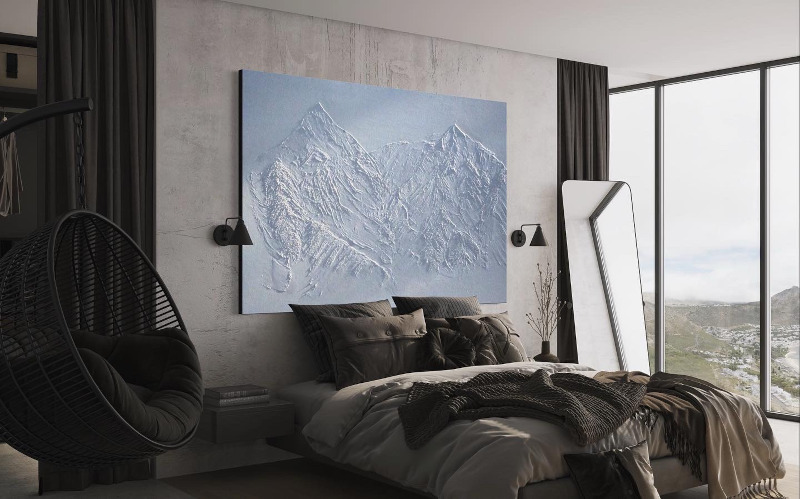
You explore the boundaries of art by blending figurative and abstract expression in your
work. How did you develop your style?
I’ve always adored figurative work. I am obsessed with organic lines, shapes, and textures. Even more so with the artists that are able to capture them flawlessly and subtly. Because of that, I was excited about the idea of combining an image and a message through texture and light. That’s how my work came to life. I can easily say I developed my style by paying close attention to what makes me excited, overwhelmed, and sad about the world all at once. Over time I was able to translate onto canvas something as dramatic as our changing landscapes into something that doesn’t ignore the simplicity and subtlety that exists in nature.

From afar, your art almost looks like a sculpture, but you are using acrylic paint for your
artwork. How do you achieve depth in your paintings? Can you explain this process a
little bit?
My medium is a combination of acrylic paint, acrylic polymer, and a matte modeling paste. I begin with finding a subject that makes me smile unexpectedly. I study my subject through sketches, and then start with a base skeletal outline to which I add layers and layers, keeping in mind a 3- or 4-point perspective. It’s all about the layers.
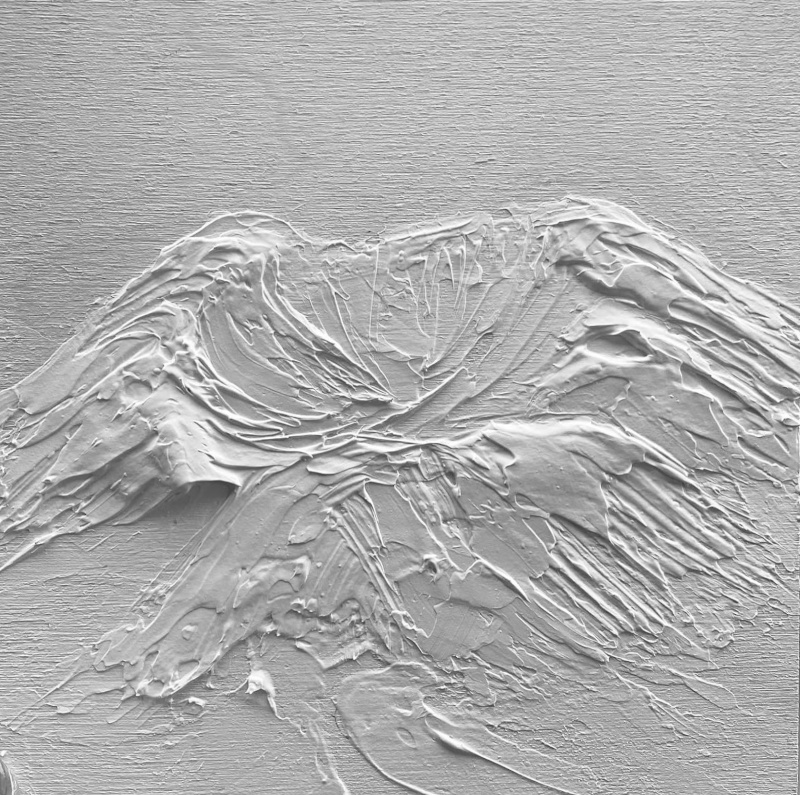
Your awareness for climate change becomes visible in your art. In your opinion – how
can art raise awareness for the environmental, economic, and social situations we face
around the world?
That’s a very good question. It’s a question I ask myself every day—to what extent can art make a difference? I think a lot of artists grapple with this question. For me, I think that art has a way of forcing an interuption in our normal, everyday relation to things, and this interruption provides [an] occasion for seeing and understanding things in different ways, for forming new relations to the things around us. It may sound like a small thing, but if my art can do this, I will count it as a success. There is always more we can do (and should do!), given the importance and complexity of these issues, and to me, art is just one part of a much larger response that is needed—though not an unimportant one, I think.
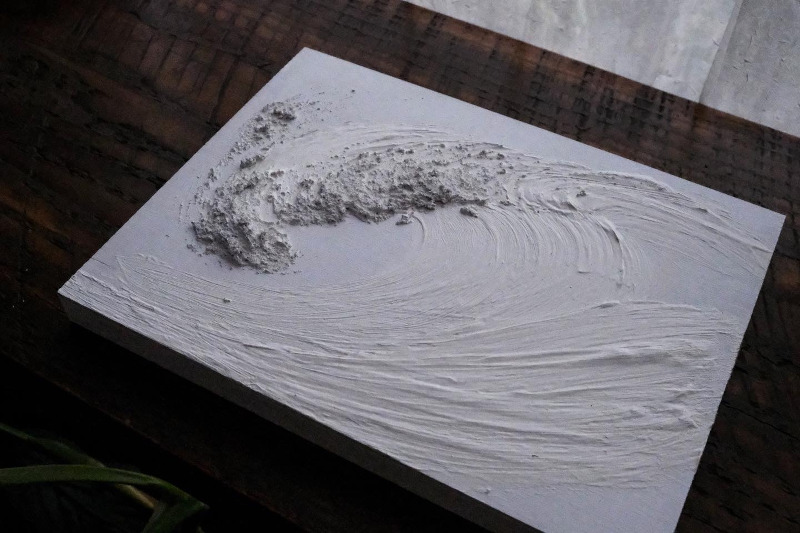
The purity of your paintings is achieved by your choice of white color. Do you think that a
return to the most basic colors helps the viewers to center their mind on your subjects?
I have a good story about that. In 2013, I went to an exhibition at the Musée des Beaux Arts in Montreal. At this exhibit, there was one piece that caught my attention, not because it was particularly beautiful, unique, or different, but because it was so simple. The piece was a triptych with three 7’x7’ canvases, all in red. But when I got closer, there was something special about them. Each of the three canvases had subtle strokes going in different directions - one horizontal, one vertical and one diagonal - something I wouldn’t have noticed if there were other elements to the piece, which in return made me appreciate the complexity and beauty of this painting for making me stop and pay attention. So yes, I do think a return to basic colors helps viewers shift their attention to the liveliness of the subject in my paintings, as opposed to the picture as a whole.
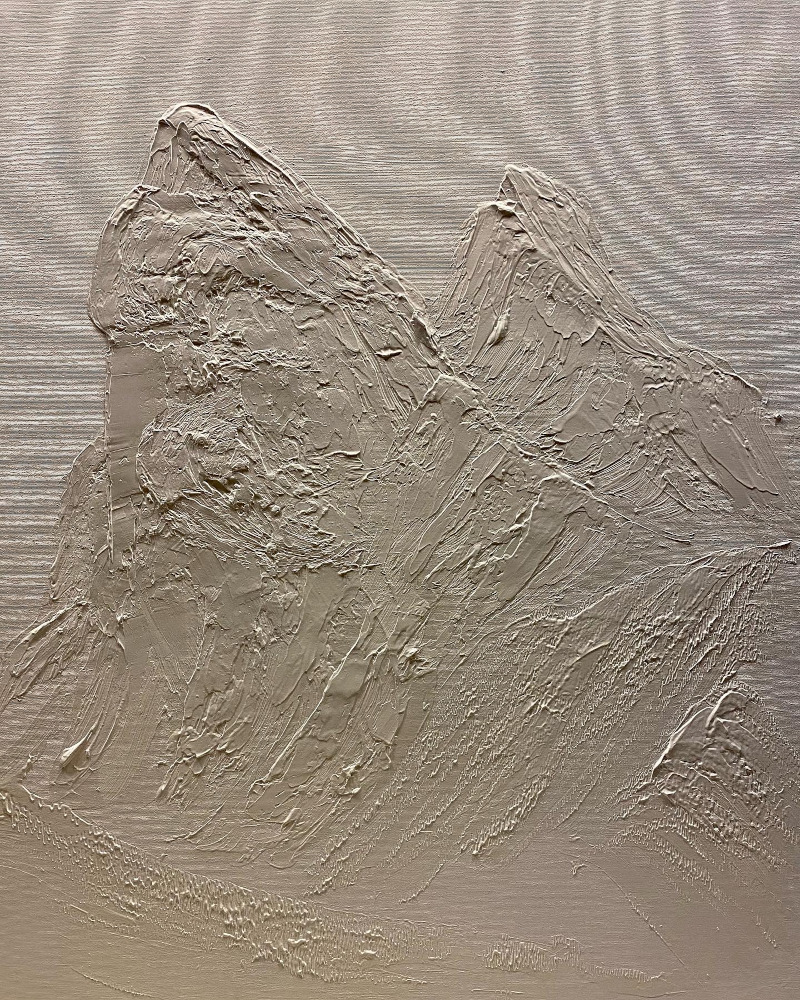
Can you name an influential personality in the art field who inspires you to this day?
What kind of inspiration do you draw from this person for your own art?
I am a big fan of Zaria Forman (with whom I share a mission statement: Painting to create awareness about climate change) and her legendary pastel drawings of icebergs. I also pay close attention to Conrad Jon Godly’s work. Both of these artists choose organic subjects that are constantly evolving and changing.

If you were in the unique position to showcase your paintings in a community where art
is restricted, what would be your main focus in sharing your work?
Again, this is a difficult question to answer, and is tied to the question of art and its role in effecting change. I would say that my focus would be what it is now: to in some small way participate in the conversations that are important to people about the world that they live in.
|
|

